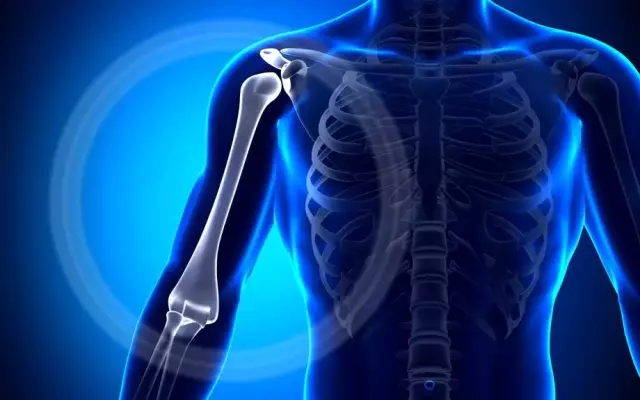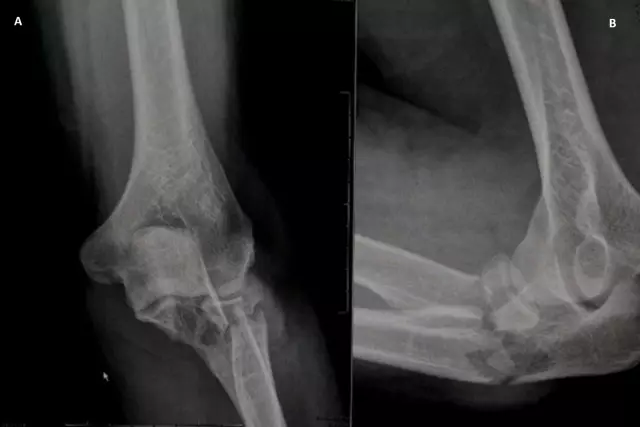- Author Rachel Wainwright [email protected].
- Public 2023-12-15 07:39.
- Last modified 2025-11-02 20:14.
Ischial bone fracture
Anatomically, the ischial bone is located in the posterior and inferior acetabulum and consists of a body and branches. The branch extending from her body has a thickening - the ischial tubercle, and the lower part is fused with the lower branch of the pubic bone. Strong muscle contractions due to uncoordinated, gusty movements, as well as falls on the ischial tubercles, can lead to fractures of the ischium.
Ischial fracture: treatment and diagnosis
When falls on the ischial tubercles, the most common types of fractures of the ischial bone are fractures of the ischial tubercles, unilateral and bilateral vertical fractures of the pelvis. As a result of strong muscle contractions, fractures of the ischium often occur in the form of avulsion fractures of the ilium of the tubercle.
Fractures of the ischium are quite severe injuries of the human musculoskeletal system, and their frequency is about 10% of all traumatological injuries.
If there is an isolated fracture of the ischium, then the prognosis of the course of such damage is favorable, and the risk of complications is minimal. These fractures are mainly due to direct injury.
Closed fractures of the ischium can be either single or multiple. If the fracture is single, then the anterior butterfly-shaped semicircle formed by the ischial bones is most often injured.
Very often, fractures of the ischial bones develop as a result of falling on the buttocks or squeezing the pelvis. Patients complain of pain in the area of the fall, which increases with the movement of the lower extremities, in particular with flexion of the lower leg.
For an adequate diagnosis of fractures of the ischial bones, it is important to correctly collect all the details of the anamnesis of trauma, especially the posture during a fall. An examination of the patient is also necessary. Patients are not always conscious due to painful shock, and such external manifestations as hematomas at fracture sites often develop several hours after injury. Radiography is a method of objective diagnosis of sciatic fractures.
Treatment of fractures of the ischial bones without fail includes anesthetic therapy. The most comfortable position for patients is the supine position in the "frog" position: the legs are bent at the hip and knee joints, the hips are turned outward, the knees are pulled apart, and the feet are closed. In order to provide it, both specialized orthopedic beds and ordinary beds equipped with special bolsters can be used. Such rollers are placed on patients in the area of the hip and knee joints.
The main importance in treatment is given to adherence to bed rest, the duration of which is at least 4 weeks. In this case, the restoration of the functions of the affected limb is possible after 7 weeks. Further, rehabilitation is recommended in the form of physiotherapy and physiotherapy exercises.
The consequences of fractures of the ischium

With multiple fractures of the ischial bones, various complications may develop, as well as damage to the internal organs of patients - the bladder and urethra, intestines, internal genital organs. Severe traumatic bleeding can often occur. Such fractures occur during car accidents, building collapses, earthquakes.
The consequences of fractures of the ischial bones can be post-traumatic infection and even sepsis, delayed bone fusion, as well as improper fusion or non-union.
Also, in the area of the fracture, damage to blood vessels, muscles, nerves and tendons, the development of paresthesias due to traumatic compression, osteomyelitis and osteoarthritis can be noted.
In the most severe cases, limb shortening, atrophy and hypotrophy of the gluteal muscles, contracture of the hip joints may develop.
The information is generalized and provided for informational purposes only. At the first sign of illness, see your doctor. Self-medication is hazardous to health!






